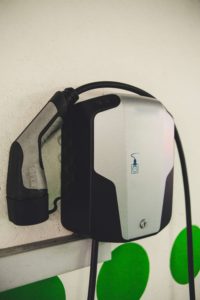
There is some confusion on who created the first EV, but the very first recognition of this technology according to history notes was in the early 1800s.
In 1828 Anyos Jedlik made a small model car that could move on an electric motor. This was the prototype used to create modern electric vehicles. Between 1832 and 1839, Robert Anderson, a Scottish inventor, created a larger version of the electric motor. This electric motor was used to drive a carriage.
In 1834, Professor Sibrandus Stratingh and Christopher Becker also created a battery-powered electric car based on Anyos Jedlik’s prototype. The concept of the electric vehicle did not become widespread during these times. Rather, it served to inspire others on improvements that could become recognized. In the United States, William Morrison designed and made the first EV in 1890. After this time, EVs began to pop up across the United States as various scientists and engineers worked hard to find the perfect model. By the late 1900, there were more electric cars on the roads garnering public attention. Electric cars soon accounted for 1/3 of automobiles. Henry Ford and Thomas Edison did not stand idly by as they collaborated to join the electric car industry.
Unfortunately, after such promising progress, gas-powered vehicles took over the market in 1925. At that time, gas was cheap, and no one was concerned with the impact on the environment.
Things seemed to turn around again for electric vehicles in 1990 when California released zero-emissions vehicle policy. Concerns for the environment were becoming greater, and by 2000, everyone wanted a solution.
Fast forward to 2008 when Tesla Roadster became available. It had a lot of setbacks and other brands like Chevrolet and Nissan created and released their EV models.
Again, fast forward from these developing times of the EV to 2012, 2015, and 2016. People now want to contribute to a cleaner or greener environment with EV. In 2012, Tesla released the Tesla Model S. Electric cars can now move at impressive speeds, stay longer on the roads, get charged en route or at home, and basically serve all automotive needs while saving the environment. Many brands strive to produce the best electric cars with Tesla leading the pack.
The professional electrical technicians at Elcon Electric can help you set up your home charging system to better enjoy your electric vehicle.

